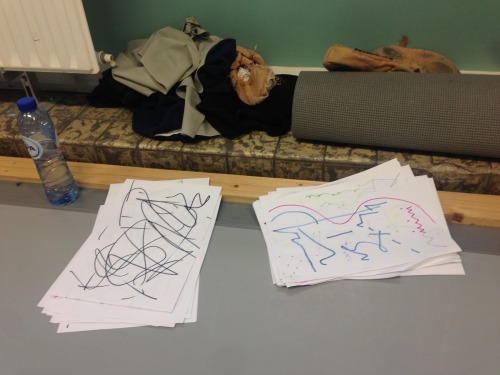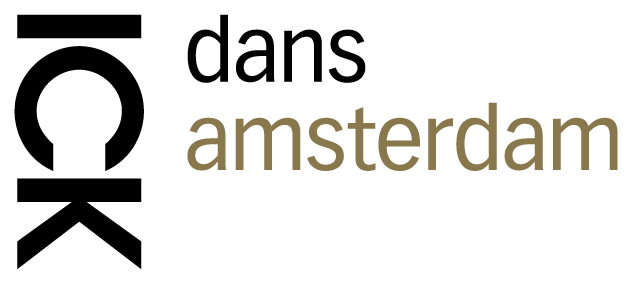Choreographer and dancer Nacera Belaza was born in Algeria and raised in France from the age of five. She studied literature and French poetry. Without taking any dance classes, she dedicated her life to dance. She developed a very personal way of working and today she’s even glad she never had a formal dance education which would only distract her to see the human behind the dancer. When working with trained dancers, she tries to deconstruct all physical knowledge and habits he/she has about himself/herself.
Her work happens in the moment and is in fact not reproducible. Each single performance starts from zero. It makes it fragile and powerful at the same time. Her work looks effortless, but demands great concentration and complete surrender of the dancers.
For its newest production ZIEL|ROUH, ICK asked Belaza to create a new piece on Sufi music. ZIEL|ROUH, a collaboration between ICK and the Amsterdam Andalusian Orchestra, is a triptych in which different choreographers each work with another trend from the Andalusian repertoire: Emio Greco | Pieter C. Scholten will work with the tarab (classical), Nacera Belaza with sufi andalusi (mystical and spiritual) and Vincent Colomes with the chaabi andalusi (contemporary folk music). In the past, Belaza has already created some choreographies that have been inspired by spirituality. In her pieces she explores the relation between traditional forms of Algerian dance, holy rituals and her own movement idiom. But she never worked with actual sufi music on stage before. For each performance she creates an own soundtrack using the dramaturgy and structure of the piece as a guideline.
For this piece, she took the challenge to work with sufi music and a live orchestra. It is in challenges and constraints that she seeks a new way of freedom. For her, it’s important to not go with the melody of the music, she listens to it more as it were a painting. She wants to catch the calligraphy of the music and have that lead the way, creating a new dimension in the body.
While working with the dancers, she gave very precise instructions how to reach a state of total openness:

On sound and music
Listen to this kind of music. It is a kind of lace that structures the space. See how you can be more and more sensitive to the structure and to how it works. Listen to all that you can find. The more you focus on it, the more you discover new sounds.
Imagine the sound getting through you, the more it gets into you, the more it has the possibility to sculpture you. Take any sound and try to perceive it in the whole body.
Perceive the sound as an abstract thing, collect just the sound and not the melody. You are no longer listening to the folkloric dimension of the music. Try not to project any emotion on it.
Let the sound produce the form, don’t worry about the form. Trust the sound.
On habits and loosing control
Each one of you have certain habits when you enter the space. It gives you the sensation of being safe, but I am not interested in that, rather in what you and I don’t know yet.
Cherish the moment where you lose control. Maybe today that doesn’t mean a lot to you because you are young and in good health, but really the moments you don’t control, they tell much more about who you are.
I find it very interesting when you say: I don’t know how to move. This is what I am trying to do since the beginning. I want you to lose this knowledge about yourself. Learning something new can bring you to very uncomfortable places.
If you succeed in putting yourself in such an intimate place, this place where you give up in front of an audience while the performance is going on, that is the challenge. It is not about you doing many things, it is about you losing control in a very tense moment. Losing control mentally and physically and believe that something is going to happen.
On the body and dance
If you are really connected, you can feel it even with your eyes closed. This is how we should be connected on stage – not with the mind, but with the body. When you start to perceive it that way, the audience will perceive you in that way, too. When you are in your mind, the audience will be in their minds, too. When you are connected through the body, then what you feel is so much more solid.
Strength might feel more impressive, but for me this is more dance. It is real. It makes me feel something and than I don’t care how it looks like. If the body is available, something might happen, and try not to judge what is going to happen.
On space, calligraphy and the endless image
One of the images to think about is calligraphy, infinite movement. Where do I go if I feel that something is happening endlessly? So think about calligraphy: consciously create a certain frame and project yourself far enough in space. The only thing to keep in mind – whatever you do on stage – is that it’s endless.
Picture yourself in the whole space. We cannot see a drawing if it hadn’t a (white) surface beneath. All this drawing is taking place in you and in the space. Don’t focus just on yourself but really see the space as if it were a second volume of the body.

On time and the journey
When you have no judgment or you do not think about time, it will becomes easy. This journey will be as deep and as long as you want it to be. It’s up to you.
It is about surrender, to go on stage and not worry about the movement or time but about the journey.
Portrait Nacera Belaza: Isabelle Levy-Lehman


Thanks for the nice writing. I have bookmarked your site and will be back to read more!
Very nice write-up. I absolutely love this site.
Continue the good work!
Tak czytam twego bloga od jakiegoś czasu, ciągle mnie coś zastanawia, mie wyprowadzasz czytelnika do “ciemnego lasu”.